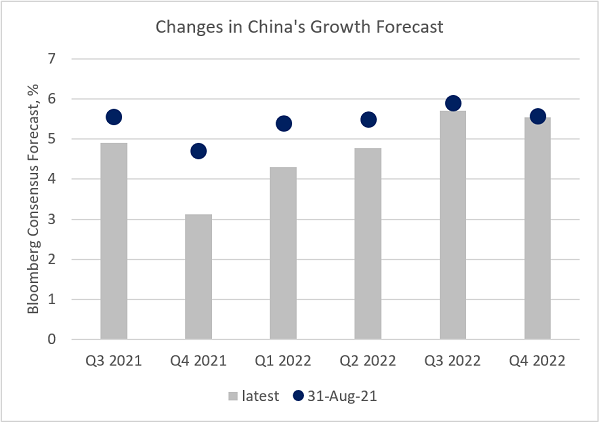China - Growth slump is over?
China’s activity gauges signal that the near-term growth outlook remains problematic. The government has plenty of fiscal space to address the issue. The question remains, will it use it or will ideology dictate otherwise?
China’s headline activity gauges, the Purchasing Managers indices (PMIs), moved back to expansion territory in November, adding weight to an argument that the growth momentum is stabilising after being hit by adverse factors, including tighter regulations, the real estate crunch, energy rationing, supply chain disruptions, higher commodity prices and the zero-COVID approach. Targeted policies helped. First, authorities rolled back real estate restrictions, they called on property developers to honor their debt obligations, and they urged banks to maintain a “stable and orderly” flow of credit to the sector. Second, there was a concerted effort to ease commodity price pressures and power rationing. Third, the government extended support for small and medium-size companies, cutting some taxes and fees, assisting with cloud/digital services, lowering power tariffs (via local governments) and asking for more funding from banks.
Even though the headline PMIs beat expectations, weaknesses are abound. The manufacturing PMI was barely above the expansion/contraction threshold (50.1). The services PMI was a touch lower than a month ago (52.3). Gauges for services that are sensitive to the movement restrictions, and COVID outbreaks, moved deeper into contraction zone. The new orders sub-index remained in contraction territory, as did the small companies PMI. China’s growth outlook for the next several quarters is now noticeably weaker than was expected a few months ago (see chart below), and today’s release signals that the risks still exist – especially with such formidable headwinds as the omicron outbreak and the cooling real estate sector.
Until now, in regards to policy support, the central bank kept its “bazooka” locked in a safe, with key rates and reserve requirements for banks unchanged. However, the latest communications contained a reference to “quasi-stagflation”, while the monetary policy report no longer mentioned the need to control “the valve on money supply”. The next batch of money and credit aggregates, due in about 10 days, may guide the central bank's policiy. So, stay tuned!
Chart at a glance: Consensus sees China’s growth slump lasting until Q322

Source: Bloomberg LP
Published: 30 November 2021
VanEck Investments Limited (ACN 146 596 116 AFSL 416755) (‘VanEck’) is the issuer and responsible entity of all VanEck exchange trades funds (Funds) listed on the ASX. This is general advice only and does not take into account any person’s financial objectives, situation or needs. The product disclosure statement (PDS) and the target market determination (TMD) for all Funds are available at vaneck.com.au. You should consider whether or not an investment in any Fund is appropriate for you. Investments in a Fund involve risks associated with financial markets. These risks vary depending on a Fund’s investment objective. Refer to the applicable PDS and TMD for more details on risks. Investment returns and capital are not guaranteed.




